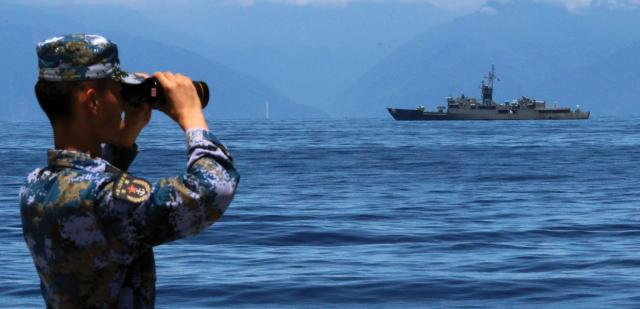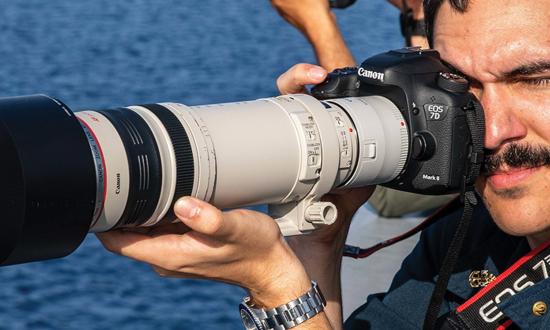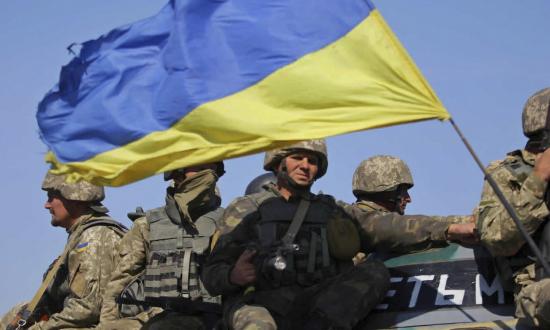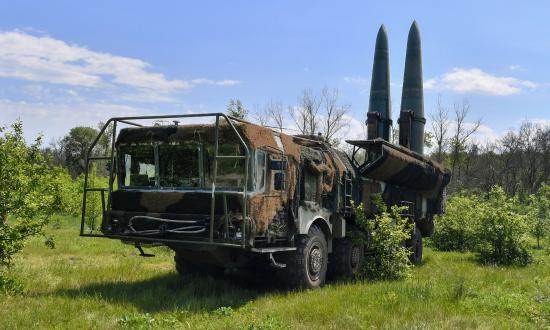U.S. threat assessments in the lead-up to Russia’s invasion of Ukraine in February 2022 got the intent right. The Russians invaded as predicted. But on the capability side, analysts focused on the quantity of troops and firepower being massed on the border. Surely, the outgunned Ukrainians could not withstand the pending Russian onslaught. Kyiv was expected to fall within days.
Assessing military capability through the lens of troop numbers and weapon systems would be familiar to anyone who remembers how the Soviet military threat was often portrayed. A prominent example was the Defense Intelligence Agency’s (DIA’s) Soviet Military Power, first published in September 1981, and then as an annual volume from 1983 to 1990.1 Making a judgment on the effectiveness of a military force is difficult, especially in the absence of a historical record. By the 1980s, no one had seen the Soviet military in significant action against a conventional foe in four decades. So, after looking at the force structure, the capabilities of the hardware, and the doctrine, DIA analysts assessed that the Soviets were competent enough to make everything work as it looked on paper.
The Human Factor
In 1980, however, Richard Gabriel published his “attitudinal portrait of the Soviet soldier.”2 His survey of émigrés to the United States who had served in all branches of the Soviet military revealed high rates of alcoholism, absence without leave, assaults on officers, desertion, and suicides, indicating “grave problems of morale and discipline.”3 Since these “pathologies” occurred in units under tight control, he assessed that such problems would get worse in areas and under conditions in which control was weakened, such as in conflict zones outside the Soviet Union. He concluded that the Soviet soldier would fight well when protecting the homeland. But he continued, “If the Soviets initiate the attack, the question of Soviet battlefield performance is much more problematic. . . .Under the right circumstances it is probable that Soviet units might well lose their highly fragile bonds of unit cohesion and come apart under fire.”4
Viktor Belenko, who flew his MiG-25 Foxbat to Japan in 1976, reported that Soviet Air Force units in the Far East were plagued by desertions, suicides, disease, and alcoholism, including drinking alcohol meant for aircraft. Living conditions were abysmal, and the food was bad. While Belenko believed Soviet pilots would fight well in defense of their country, he had little faith in the enlisted ground crews, whose lives were so brutal in peacetime that he questioned “whether they could be coerced to perform adequately in the chaos and adversity of wartime.”5 Fellow defector Alexander Zuyev, who flew a MiG-29 Fulcrum to Turkey in 1989, echoed Belenko’s comments on the dismal living and working conditions of the ground crews and described a growing black market in aircraft alcohol in some units. Maintenance officers had to do the work themselves because their enlisted subordinates were hopeless. Troops looked forward to the visits of Communist Party bosses because it meant better food and cleaner kitchens.6
Compounding the misery in a military that almost exclusively relied on conscripts—and with a near negligible reenlistment rate—was the unofficial hierarchy that allowed conscripts with more service time to run a reign of terror on the junior troops.7 The juniors were essentially slaves to the seniors, and failure to comply meant physical punishment—which was sometimes fatal. One Soviet sergeant admitted that this practice had “eaten away” at the military, and nothing would change until a professional noncommissioned officer corps was developed.8 In his book on the Soviet military threat, Andrew Cockburn noted that a system “in which at any time half the strength is being brutalized and exploited by the other half, is hardly likely to foster the trust and mutual confidence that makes for cohesion.”9
Soviet military scholars Harriet and William Scott wrote, “The effectiveness of a military force largely is dependent on its officer corps.”10 The massive troop welfare issues of the Soviet military would have challenged even the most dedicated leaders. Moreover, Soviet officer training was highly specialized, and taking the initiative was an alien concept in a top-down system of command. The Scotts concluded that the Soviets would “fight effectively . . . against any force invading Soviet territory. But outside the Soviet Union, in a fluid situation with communications with higher headquarters disrupted, most Soviet officers would probably be at a loss.”11
The Human Factor in Action
Although the Red Army did not fight a major conventional conflict during the Cold War, the invasions of Hungary in 1956, Czechoslovakia in 1968, and Afghanistan in 1979, as well as the preparations to invade Poland in 1980, were revealing.
Thousands of troops and hundreds of tanks were sent into Budapest, expecting to conduct a “police operation” against rioting students. Instead, as one Soviet general described, “We were greeted by a hail of gunfire and bullets.” The rebels used local knowledge and hit-and-run tactics to attack the Soviets, whose tanks could not chase them down narrow streets. The Soviets were reluctant to use infantry for fear of incurring a high number of casualties.12 Troops became tired, demoralized, and hungry. Tank crews were supposed to find their own food, which meant looting shops and becoming targets for rebels. One observer noted, “It is difficult to overestimate the part which the Russians’ food shortage played in undermining their morale and raising the hopes of the Hungarians.”13 And not all the troops knew why they were fighting. Some believed they were in Berlin fighting Nazis.14
Cockburn described how the invasion of Czechoslovakia descended into chaos: “Units got lost, armored units ran out of fuel, and troops ran out of food, while almost from the moment they crossed the border, the columns got stuck in enormous traffic jams, which would have provided tempting targets in a shooting war.”15 A Soviet Army officer who participated in the invasion wrote that the Carpathian Front commander’s solution to the bottlenecks was to push all inoperative vehicles off the road: “Hundreds of tanks, artillery tractors, and vehicles containing top-secret cypher equipment rolled down the slope.”16 Eventually, troops began to question why they had been sent to Czechoslovakia, and several hundred deserted into Austria.17
Soviet troops who went into Afghanistan faced primitive living conditions and limited food supplies. The ritual of hazing continued. In 1987, 33 percent of the crimes dealt with by the army in Afghanistan were for “military bullying.”18 But the Afghanistan experience was unique for the extreme difficulty the army had in keeping the troops healthy. In his account of the war, Rodric Braithwaite wrote, “The near collapse of the 40th Army’s medical services was one of the worst consequences of the improvisation and lack of funding which accompanied its deployment.” He compared the health situation to that in the 1853–56 Crimean War, and for the same reasons: “Dirty water, appalling sanitation, dirty cooks, dirty canteens, dirty clothes, poor diets.” The overwhelming majority of hospital visits were because of disease, not war wounds.19
Not long after the invasion of Afghanistan, the Red Army prepared for another intervention, this time into Poland, and three military districts were ordered to mobilize. But not all the reservists could be located, and many deserted. Units were moved around the countryside for no apparent reason. Senior officers criticized the readiness of the forces, noting problems with “drunkenness, abuse of rank, corruption, mismanagement, waste, and bureaucratism,” and cited the need to fix the army’s reserve system.20
The 1983 edition of Soviet Military Power mentioned that the poor morale and motivation of Soviet conscripts made them “ill-prepared to cope with the frustration of the counterinsurgency war” in Afghanistan.21 However, the Soviet involvement in Afghanistan was a sideshow compared with the main game of the NATO–Warsaw Pact faceoff, and neither Afghanistan nor other examples of Soviet Cold War deployments represented what the West expected to see from the Soviets in a war in central Europe. The portrayal of a competent Soviet military machine persisted. The 1988 edition of Soviet Military Power noted the Soviet ability to “achieve rapid, comprehensive . . . national mobilization for global war,” and that “Soviet logisticians have developed a logistics support structure . . . that can effectively support simultaneous strategic offensives.” The document acknowledged that “qualitative differences . . . factor into the analysis,” but these differences were not further explored.22
Russia’s New Look
As the Soviet Union dissolved, qualitative problems became impossible to ignore. The Pentagon’s 1991 Military Forces in Transition noted the problems stemming from the legacy of Afghanistan, draft evasion, hazing, low morale, and declining officer living standards, especially for those withdrawn from eastern Europe.23 The attempt to quell rebellious Chechens in Grozny in 1994 highlighted the problems. In a replay of Budapest in 1956, the Russians sent armored columns, without infantry support, into the city. The Chechens were better armed and more ferocious than the Hungarian students. Russian troops were slaughtered, and the streets were full of their burned-out vehicles.24 Former Russian President Boris Yeltsin wrote that following the first war in Chechnya (1994–96), Russia “parted with one more exceptionally dubious but fond illusion—about the might of our army . . . about its indomitability.”25
The Defense Intelligence Agency revisited the Russian threat in its 2017 Russia Military Power report and admitted that in the 1990s, the “readiness of the force was minimal.”26 On an optimistic note for Russia, the report stated that deficiencies during the short war with Georgia in August 2008 boosted efforts to reform the military. This “New Look” program was supposed to create a “more ready, modern, and professional military able to respond to 21st-century conflicts.”27
“New Look” should have been on display during the march to Kyiv. However, 66 years after Soviet tank crews scrounged for food in Budapest, their 2022 Russian counterparts had to do the same in Ukraine. More than five decades after the invaders of Czechoslovakia got bogged down in traffic jams, the invaders of Ukraine suffered a similar fate—only this time, they were being shot at. Reports of torture and murder of civilians, drunkenness, looting, vandalism, desertions, fratricidal attacks on officers, lack of food and fuel, and sabotage and abandonment of vehicles validated the predictions of Gabriel and Cockburn about unit cohesion coming apart under fire. It is also an indictment of front-line leaders who, as the Scotts suggested, would struggle to deal with unexpected situations in combat.
The loss of the guided-missile cruiser Moskva raises questions about the readiness of the Russian Navy as well. Poor-quality training in the Soviet Navy meant conscripts and junior officers were not prepared for their jobs. In 1986, one analysis judged that Soviet “personnel policies have been adequate to support naval development, but how well the navy would function in wartime remains uncertain.”28
The Russian Air Force has not played as dominant a role in Ukraine as expected. One Ukrainian pilot said that Russian pilots he heard on the radio sounded scared and ran away when things went wrong.29 The readiness issues Belenko and Zuyev reported decades ago are almost certainly still a problem.
China’s Concerns
The Chinese Army in 1950 was regarded as a third-rate force of poorly trained peasants. Although the army was filled with illiterate peasants, they proved to be tough foes on the battlefield in Korea. By 1952, the U.S. Eighth Army consistently rated the Chinese as having better combat efficiency than their North Korean counterparts.30
The People’s Liberation Army (PLA) is not being underestimated today. According to the 2021 edition of the Department of Defense’s annual report on China, “the PLA continued to make progress implementing major structural reforms, fielding modern indigenous systems, building readiness, and strengthening its competency to conduct joint operations.”31 But unlike Eighth Army Headquarters during the Korean War, U.S. military personnel today have not had the opportunity to see the PLA in action before making assessments. U.S. analysts are only looking at numbers, hardware, training, exercises, and doctrine.
China’s last war was with Vietnam in 1979. During that one-month conflict, the PLA suffered tens of thousands of casualties. Since then, we have only seen PLA soldiers brawl with Indian troops in the Himalayas and serve in U.N. peacekeeping missions. PLA Air Force fighter pilots harass other military aircraft in flight, but the air force’s last combat experience was 70 years ago. Chinese ships regularly harass and ram other nations’ ships, but how would the PLA Navy or China Coast Guard perform in wartime? The PLA would almost certainly be a capable defender of its homeland. But can the PLA meet the challenge of an expeditionary mission, perhaps against Taiwan or further eastward into the Pacific, requiring the coordination of air, ground, and naval assets, against major opposition?
China’s leaders are not so sure. According to retired U.S. Army Lieutenant Colonel Dennis J. Blasko, a China expert and former Army attaché to Beijing and Hong Kong, public criticism by China’s leaders “implies a persistent lack of confidence in PLA capabilities and a failure of the PLA’s educational and training systems to prepare commanders and staff officers for future war.”32 Blasko’s research of Chinese military publications revealed years of dissatisfaction with the quality of the PLA. Twenty years ago, former Chinese President Jiang Zemin stated, “We must train qualified personnel first, for we would rather let qualified personnel wait for equipment than equipment wait for qualified personnel.” Since then, China’s leaders have continued to levy criticisms, citing the lack of recent combat experience; “peacetime attitudes” among soldiers that compromise unit readiness; insufficient capability of officers at all levels to command during war; and commanders “not willing” or “not able” to use the “new-type combat forces” they have been assigned.33
Internal stability is crucial to the continued rule of the Chinese Communist Party, and the PLA can threaten this supremacy. Political reliability is therefore a paramount concern. China’s 2019 national defense policy document called for “placing theoretical and political buildup at the top of the agenda of the armed forces.”34 The need for political indoctrination places an additional burden on the PLA’s requirements for training and assessing suitability in a force with a high rate of turnover. If President Xi Jinping has plans to send the PLA to fight far from home, he will need a convincing propaganda message that will resonate with a military whose combat component relies heavily on conscripts.35
The focus of military intelligence during the Cold War was on the Soviets’ numbers and hardware, a relatively easy task compared with the more difficult problem of assessing the human factor. The U.S. intelligence community is going down that same path with China. Given China’s impressive military production numbers and its embrace of the latest technologies, it is easy to conjure up the image of a ten-foot-tall opponent. But such an image was a myth during the Cold War, and it is a myth today. The intelligence community needs to produce “attitudinal portraits” of potential opponents to gain a more complete picture of what the United States might face in a future conflict.
1. See the video on the making of Soviet Military Power at www.dia.mil/Military-Power-Publications/. Soviet Military Power so irritated the Soviets that they responded with their own series of reports, called Whence the Threat to Peace, which depicted the Soviet Union surrounded by the military forces of hostile neighbors.
2. Richard A. Gabriel, The New Red Legions (Westport, CT: Greenwood Press, 1980).
3. Gabriel, The New Red Legions, 181.
4. Gabriel, 233–34.
5. John Barron, MiG Pilot (New York: Reader’s Digest Press, 1980), 101–105, 189.
6. Alexander Zuyev and Malcolm McConnell, Fulcrum (New York: Warner Books, 1992), 159–60, 186–87.
7. Dedovshchina in Russian is military slang for the bullying of subordinates, a practice that developed in the late 1960s.
8. Rodric Braithwaite, Afgantsy (London: Profile Books, 2011), 173.
9. Andrew Cockburn, The Threat: Inside the Soviet Military Machine (New York: Random House, 1983), 44.
10. Harriet Fast Scott and William F. Scott, The Armed Forces of the USSR (Boulder, CO: Westview Press, 1979), 380.
11. Scott and Scott, The Armed Forces of the USSR, 381.
12. Victor Sebestyen, Twelve Days (London: Phoenix, 2007), 126.
13. Sebestyen, Twelve Days, 168.
14. Brian Moynahan, The Claws of the Bear (London: Arrow Books, 1990), 275.
15. Cockburn, The Threat: Inside the Soviet Military Machine, 113.
16. Viktor Suvorov, The Liberators (London: New English Library, 1981), 223–24.
17. Cockburn, The Threat: Inside the Soviet Military Machine, 113.
18. Braithwaite, Afgantsy, 173.
19. Braithwaite, 174–75.
20. Cockburn, The Threat: Inside the Soviet Military Machine, 115.
21. Defense Intelligence Agency, Soviet Military Power (Washington, DC: Government Printing Office, 1983), 50.
22. Defense Intelligence Agency, Soviet Military Power (Washington, DC: Government Printing Office, 1988), 90, 96.
23. Defense Intelligence Agency, Military Forces in Transition (Washington, DC: Government Printing Office, 1991), 13–15.
24. Carlotta Gall and Thomas De Waal, Chechnya (London: Pan Books, 1997), 1–19.
25. Lawrence Freedman, “Why War Fails,” Foreign Affairs 101, no. 4 (July/August 2022), 14.
26. Defense Intelligence Agency, Russia Military Power 2017 (DIA-11-1704-161), 10.
27. Defense Intelligence Agency, Russia Military Power, 12.
28. Christine E. Miller and Robert G. Papp, “Soviet Naval Personnel and Schools,” in The Soviet Navy, ed. Bruce W. Watson and Susan M. Watson (Boulder, CO: Westview Press, 1986), 44.
29. NPR, “A Big Mystery of the War in Ukraine Is Russia’s Failure to Gain Control of the Sky,” 11 May 2022.
30. Kevin Mahoney, Formidable Enemies (Novato, CA: Presidio Press, 2001), 107–109.
31. Annual Report to Congress: Military and Security Developments Involving the People’s Republic of China, Office of the Secretary of Defense, 2021, vi.
32. LTC Dennis J. Blasko, USA (Ret.), “PLA Weaknesses and Xi’s Concerns about PLA Capabilities,” Testimony before the U.S.-China Economic and Security Review Commission, 7 February 2019.
33. Blasko, “PLA Weaknesses and Xi’s Concerns about PLA Capabilities,” 17.
34. China’s National Defense in the New Era, The State Council Information Office of the People’s Republic of China, July 2019. The full document is available in English.
35. Particularly in the marine, army, airborne, and rocket forces, according to Marcus Clay and Dennis J. Blasko, “People Win Wars: The PLA Enlisted Force, and Other Related Matters,” Texas National Security Review, 31 July 2020.








